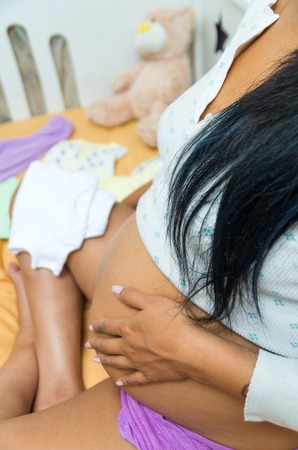Understanding Diaper Blowouts
If you’re a parent or caregiver, chances are you’ve faced the dreaded diaper blowout. While it may seem like a parenting rite of passage, understanding what causes diaper blowouts can help you handle them with less stress. A diaper blowout happens when your baby’s poop escapes out of the diaper, often up the back or out the legs, resulting in a messy situation that calls for quick cleanup and maybe even an outfit change. These incidents are especially common during infancy, as babies have liquidy bowel movements and their little bodies wiggle constantly. Factors like diapers that don’t fit well, infrequent changes, or particularly explosive poops can all contribute to a blowout. Remember, dealing with blowouts is a normal part of caring for infants—nearly every parent has a story to tell! Understanding why they happen is the first step toward managing them effectively and keeping both you and your baby comfortable.
2. Essential Supplies to Have on Hand
When it comes to handling diaper blowouts, being prepared is half the battle. Whether you’re at home or on the go, having a well-stocked diaper bag can make all the difference in turning a messy situation into a manageable one. Here are some must-have items every parent should keep close by:
| Item | Why You Need It |
|---|---|
| Diapers (Extra) | Always carry more than you think you’ll need—blowouts never happen at convenient times! |
| Wipes | Essential for cleaning up messes quickly and thoroughly, not just for baby but for hands and surfaces too. |
| Changing Pad | Provides a clean surface for changes anywhere—public restrooms, car trunks, or park benches. |
| Plastic Bags or Wet/Dry Bags | Perfect for sealing away dirty diapers and soiled clothes until you get home. |
| Change of Clothes (for Baby) | Blowouts often mean a full outfit change; pack at least one extra set. |
| Change of Clothes (for Parent) | If the situation gets really messy, you’ll be glad you brought a spare shirt or pants. |
| Hand Sanitizer | For when soap and water aren’t available after cleanup. |
Keeping these essentials organized in your diaper bag or in a dedicated spot at home means youll always be ready for whatever your little one throws your way. Consider making a checklist to ensure nothing gets left behind during busy mornings or quick trips out the door. Preparation is key to stress-free blowout management!
![]()
3. Step-by-Step Guide for Cleaning Up
Contain the Mess Quickly
As soon as you notice a diaper blowout, lay your baby on a waterproof changing pad or towel to prevent any further mess. Keep a fresh diaper, wipes, and a change of clothes within reach before you start. Gently remove any clothing that’s been soiled, rolling it inward to keep the mess contained.
Clean Your Baby Safely
Using fragrance-free baby wipes or a soft washcloth with warm water, carefully wipe away any mess from front to back to avoid spreading bacteria. For those extra-messy situations, a quick rinse in the sink or bath can be a lifesaver—just make sure the water is comfortably warm. Pat your baby dry with a soft towel before putting on a clean diaper.
Minimize Stress During Cleanup
Stay calm—blowouts happen to every parent at some point! Take deep breaths and reassure your little one with soothing words or gentle singing if they seem upset. Dispose of dirty diapers and wipes in a sealed bag or diaper pail right away to keep odors at bay. Once your baby is dressed and happy again, toss any soiled clothes into a wet bag or directly into the wash on a hot cycle if possible.
Extra Tips for Success
Keep an emergency blowout kit in your diaper bag with backup supplies like diapers, wipes, disposable bags, and an extra outfit. Remember, the more prepared you are, the less stressful these messy moments will feel. Every parent has been there—so give yourself grace and know you’re doing great!
4. Tips for Preventing Blowouts
No parent wants to deal with constant diaper blowouts, so prevention is key! With a few simple adjustments and proactive strategies, you can help minimize the mess and keep your little one comfortable. Here are some tried-and-true tips:
Choose the Right Diaper Fit
A good fit is essential for leak and blowout protection. Make sure your baby’s diaper size matches their weight and body shape. If the diaper leaves red marks or gaps around the legs and waist, it might be time to size up or try another brand. Check this quick guide:
| Baby Weight | Recommended Diaper Size |
|---|---|
| Up to 10 lbs | Newborn |
| 8–14 lbs | Size 1 |
| 12–18 lbs | Size 2 |
| 16–28 lbs | Size 3 |
Check and Change Often
Frequent changes reduce the risk of overfilled diapers leading to blowouts. Try checking your baby every 2–3 hours during the day and before or after feedings. Don’t forget nighttime changes if your baby wakes up wet or dirty.
Secure Those Tabs!
Properly fasten diaper tabs so they’re snug but not too tight. Make sure ruffles around the legs are pulled out—not tucked in—since these act as barriers against leaks.
Consider Outfit Choices
Tight pants or onesies that put pressure on diapers can cause leaks. Opt for looser clothing that won’t squeeze the diaper out of position.
Try Different Brands or Styles
If you’re still dealing with frequent blowouts, experiment with different diaper brands or styles—some babies just need a specific cut or absorbency level.
A Quick Reference Table: Prevention Checklist
| Strategy | Action Steps |
|---|---|
| Right Size & Fit | Select based on weight chart; check for gaps/marks. |
| Frequent Changes | Change every 2–3 hours; monitor after feeds. |
| Tab Placement | Tight but comfy; leg ruffles out. |
| Clothing Choice | Avoid tight clothes; choose roomy outfits. |
Following these prevention tips can greatly reduce blowout frequency, making life easier for both you and your baby!
5. Handling Blowouts on the Go
Dealing with diaper blowouts while you’re out and about can feel overwhelming, but a little preparation goes a long way. Whether you’re on a road trip, dining at a restaurant, or visiting friends, having a well-stocked diaper bag is your first line of defense. Always pack extra diapers, wipes, disposable changing pads, and at least one change of clothes for your baby—and maybe even a spare shirt for yourself!
Car Trips
When traveling by car, keep emergency supplies within easy reach, not buried in the trunk. Consider storing a portable changing pad and garbage bags for quick clean-ups. If you sense trouble brewing (like suspicious sounds from the back seat), pull over safely to assess the situation before it escalates.
Restaurants
If a blowout strikes during a meal, don’t panic. Quickly excuse yourself and head to the restroom. Many restaurants have family or accessible restrooms with changing tables; if not, use your portable pad on a clean surface. Be courteous—dispose of dirty diapers in provided bins or seal them tightly in disposal bags to minimize odor.
Visiting Friends’ Homes
When you’re at someone else’s place, ask where you can change your baby comfortably and discreetly. Bring along extra changing pads to protect their furniture or floors. Always carry plastic bags to contain soiled clothing and wipes for quick clean-ups. A heartfelt apology (and maybe offering to do a quick clean-up) goes a long way if any mess escapes containment.
With the right gear and mindset, handling blowouts away from home doesn’t have to ruin your day—or your plans.
6. When to Seek Medical Advice
While most diaper blowouts are just a messy part of parenting, there are times when they could signal something more serious. It’s important for parents to know the signs that go beyond the usual chaos of baby messes. If your baby is experiencing frequent blowouts combined with symptoms like a high fever, blood or mucus in the stool, severe diarrhea lasting more than a day or two, dehydration (such as fewer wet diapers or sunken eyes), vomiting, or signs of pain and discomfort during bowel movements, it’s time to reach out to your pediatrician.
Sometimes, changes in your baby’s stool can be linked to diet, teething, or minor stomach bugs—but persistent issues might point to allergies, infections, or digestive concerns. Don’t hesitate to call your pediatrician if you’re worried about the color, consistency, or frequency of your baby’s blowouts. Trust your instincts: as a parent, you know your child best. Your pediatrician is there to support you and can offer guidance on whether your little one needs further care or if what you’re seeing is within the normal range for babies. Staying alert and proactive helps keep your baby healthy and gives you peace of mind through every stage of messy diaper situations.


